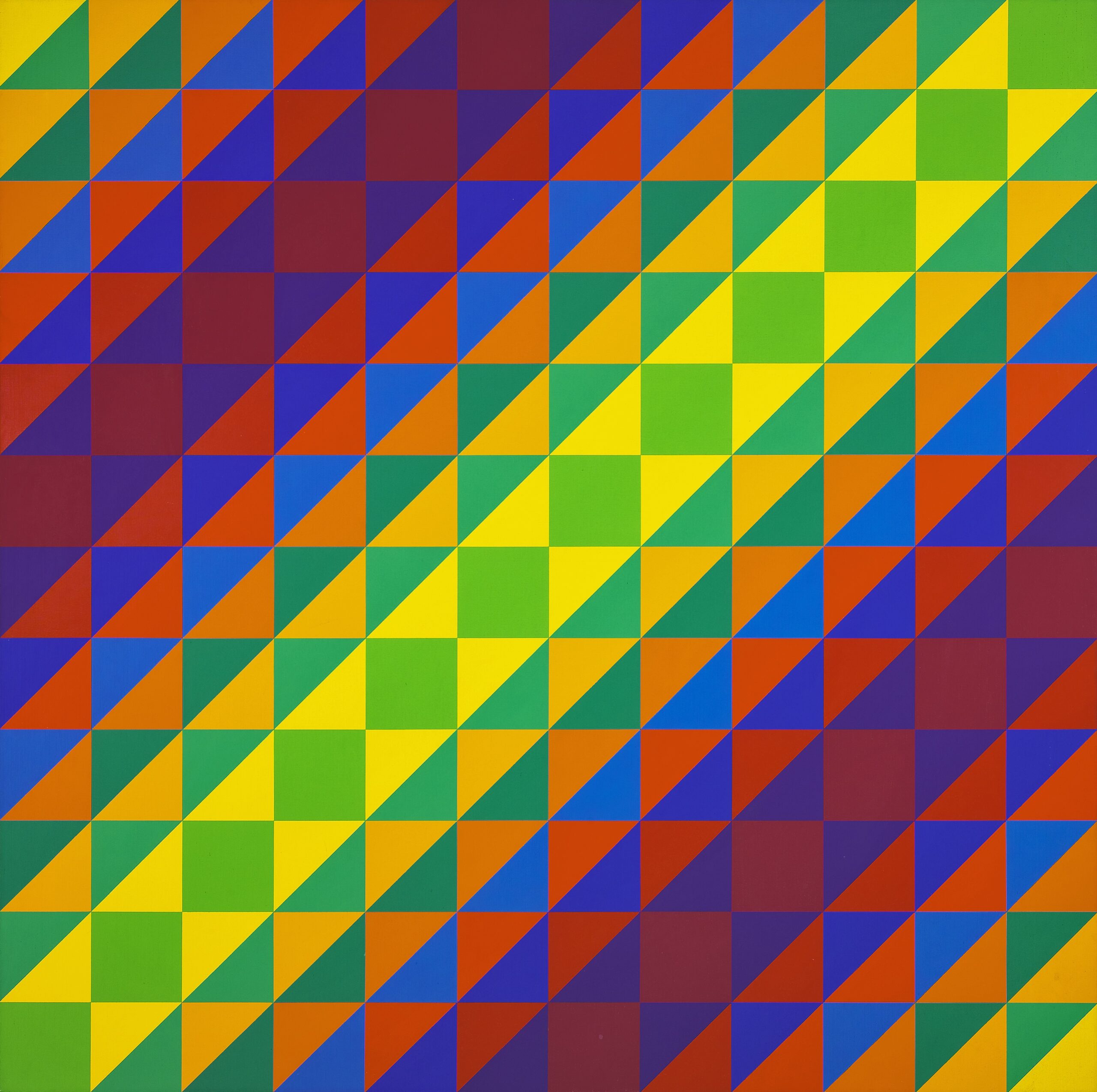Past Exhibition
Complications in Color
Member Preview: Saturday, August 2, 5-6 pm
Public Opening: Saturday, August 2, 6-9 pm
Art Walks, 6-9 pm: August 2, September 6, October 4, November 1
Complications in Color will mark the 100th birthday of Karl Benjamin (1925-2012), legendary Claremont painter and visionary of the 1950s hard-edge abstraction painting movement. The exhibition will celebrate the beauty of abstraction while revealing its deeper complexities in the work of Florence Arnold, Karl Benjamin, June Harwood, Rachel Lachowicz, and Terry O’Shea.
Sponsored by Gould Asset Management LLC, Complications in Color will open with a public reception on Saturday, August 2 from 6-9 p.m. during Art Walk with live music by Mick Rhodes Acoustic Trio.
THE EXHIBITION
Traditionally, abstract art has been discussed in terms of pure form, often overlooking its psychological and political dimensions. While Benjamin and his fellow Abstract Classicists (as they became known following a 1959 exhibition at LACMA) were celebrated for their innovative approach to painting, talented women artists faced roadblocks to recognition in this male-dominated canon.
Florence Arnold’s and June Harwood’s contributions to the genre demonstrate excellence in this field that has been too often overlooked. These three painters are masters of distilling relationships between colors and forms down to a vibrational dynamism. Rachel Lachowicz introduces a feminist lens to geometric abstraction and Terry O’Shea expands the parameters of abstraction through his sculptural work in resin.
By presenting works from diverse generations, Complications in Color offers opportunities for new insight into the multifaceted role color and abstraction play in our culture and Southern California art history. Historical, political, and psychological contexts provide a prism of interpretation for these seemingly simple objects.
PARTNER EXHIBITION AT CLAREMONT GRADUATE UNIVERSITY
CLMA is partnering with the Claremont Graduate University Art Department to present a solo exhibition of Karl Benjamin’s work running concurrently with Complications in Color.
It’s All About the Benjamins will be on view August, 2-23 in the CGU East & Peggy Phelps Galleries at 251 E. 10th St. in Claremont. The exhibition curated by David Pagel, CGU Professor of Art Theory and History, and Kim Alexander will feature rarely seen paintings from the artist’s estate. CLMA will present programming and events in coordination with CGU Art to celebrate the exhibitions at both venues.
Benjamania Extends Through the Region
Click here to see the complete list of local exhibitions and events celebrating Karl Benjamin’s Centennial Year.
THE ARTISTS
Florence Arnold arrived at painting mid-career after dedicating decades to music education. Despite this late start, Arnold embraced painting with a youthful vitality and established herself as an important hard-edge painter, drawing inspiration from her teacher Karl Benjamin. Utilizing her musical expertise, she juxtaposed colors that play off each other like notes in a chord.
Karl Benjamin was a pioneer of hard-edge abstraction, a painting style that employed fields of solid color in nonrepresentational compositions and rejected the tenets of abstract expressionism that dominated a New York-centric postwar discourse. The hard-edge painters presented color as subject in a restrained yet playful new style that was subtly radical and quintessentially SoCal. Benjamin experimented endlessly throughout his prolific career, but his paintings were always hard-edge and always placed color center stage. With a deft mastery of chromatic relationships, he instilled his paintings with a phenomenological vitality that hummed within meticulously constructed forms.
June Harwood was an early innovator in the realm of hard-edge painting. While she wasn’t included in the ground-breaking Four Abstract Classicists exhibition curated by future spouse Jules Langsner, she was included in Langsner’s California Hard-Edge Painting exhibition, which was shown at the Pavilion Gallery, Balboa, California, in 1964. Her abstractions, which grew out of early experiments with collage and still-life, demonstrated a mastery of the picture plane, a seemingly effortless ability to destabilize the relationship between figure and ground. Harwood was never content to stick with a signature style. She produced various bodies of work in later years that increasingly reintroduced collage and organic textures to her work. Her wry sense of humor showed itself in the titles from her Rock Series, which employed the names of rock n roll bands with a tongue-in-cheek distance.
Rachel Lachowicz’s earlier work often employed direct appropriation of iconic male modernist works realized in lipstick or eye shadow, but more recent forms delve into abstraction without referential attribution. This ambiguity of form lends itself to a more subtle challenge of gender binaries and a deeper exploration of color and its phenomenological potential. In the context of Lachowicz’s work, the perceived “purity” of abstraction becomes layered with political complexity.
Terry O’Shea came out of the Venice Beach-based light and space scene of the 1960s, which was a movement born out of hard-edge painting. While O’Shea employed similar techniques of industrial space-age materials and meticulously polished translucent forms, he also stood apart from better known light and space sculptors due to his jester-like sensibility. Take, for example, his capsule sculptures. These pieces of beautifully layered resin are strikingly reminiscent of over-sized pills. Viewers are left to wonder what mind-altering effects might take hold if one were to ingest these seductively beautiful objects.
The exhibition is generously sponsored by

Gallery
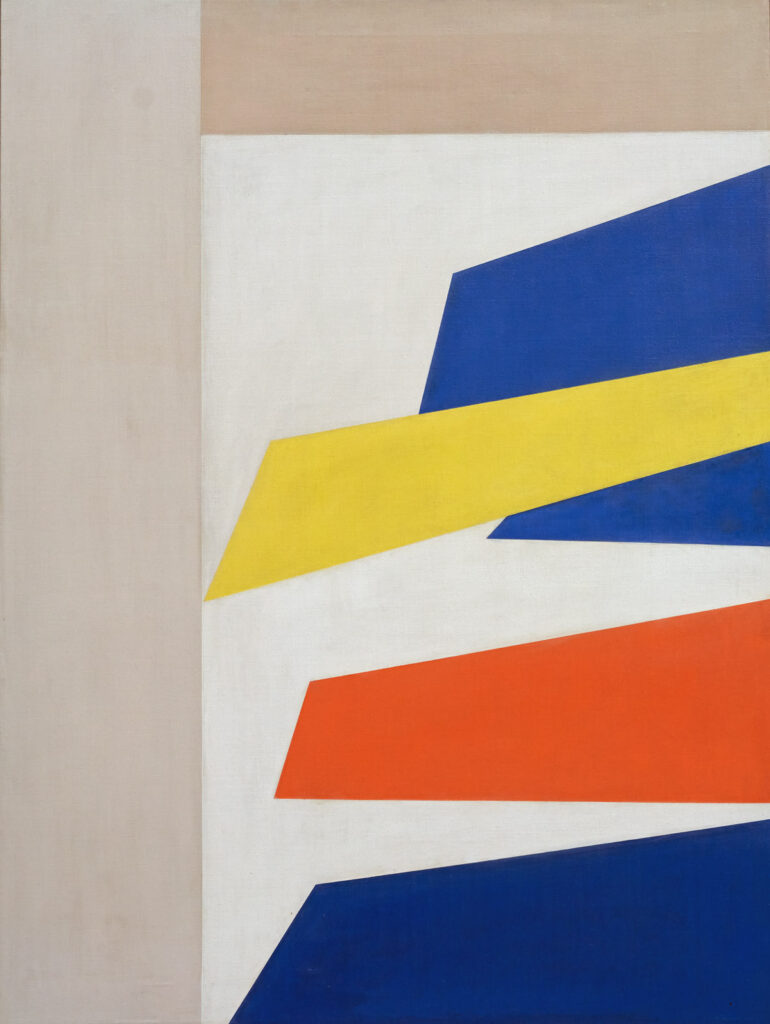
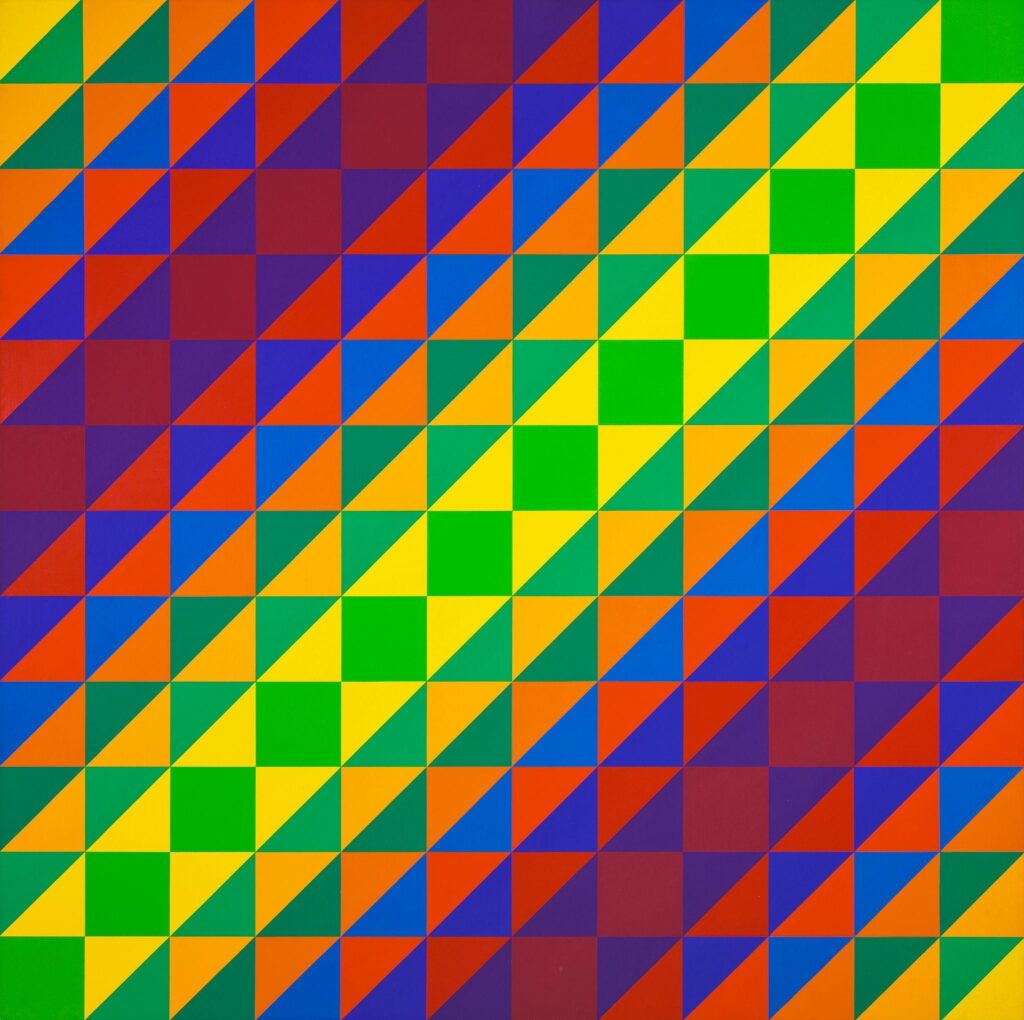
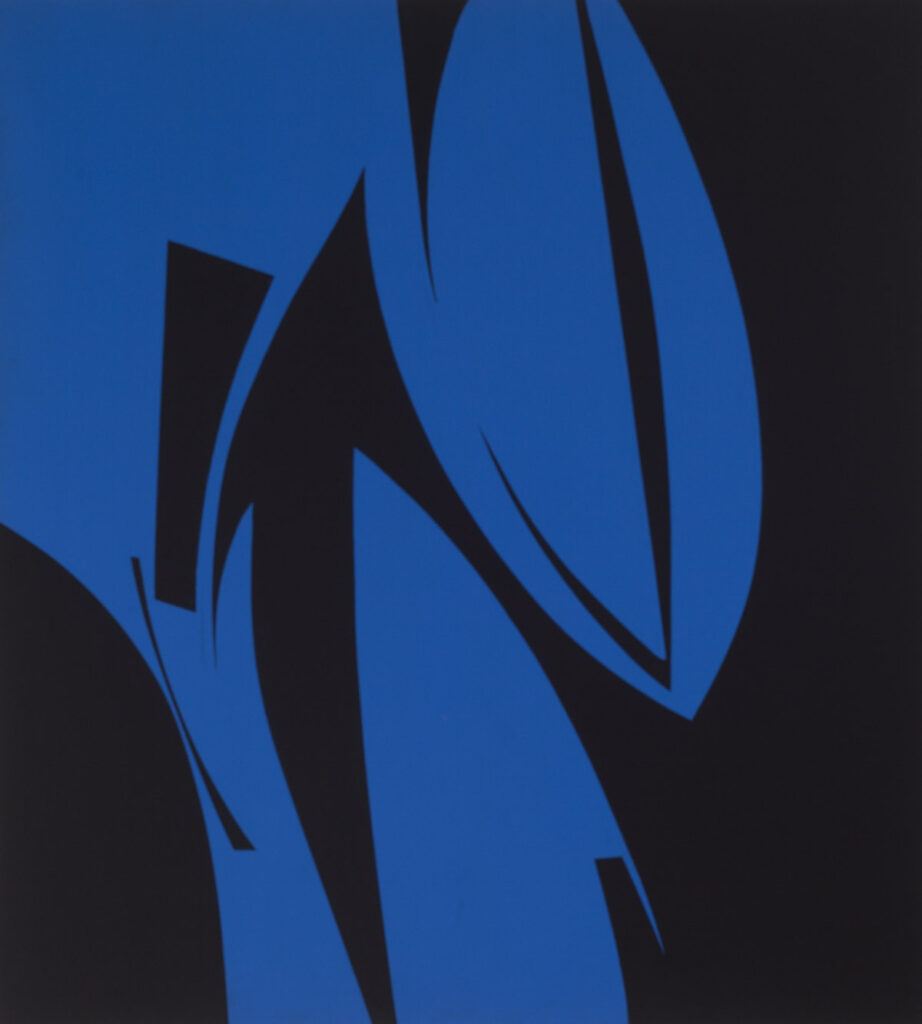
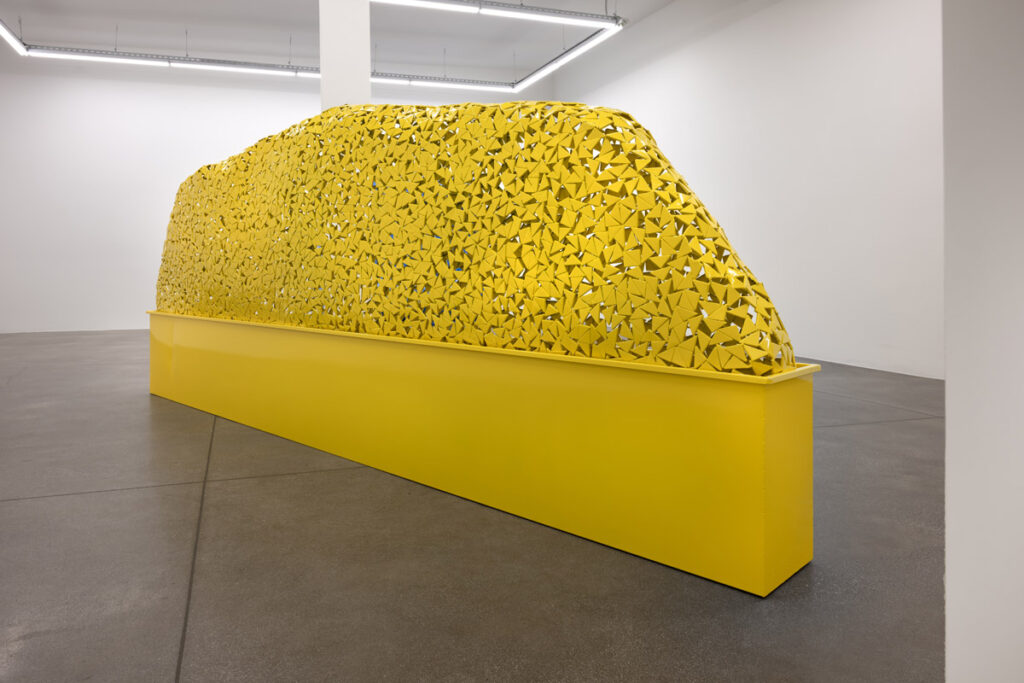
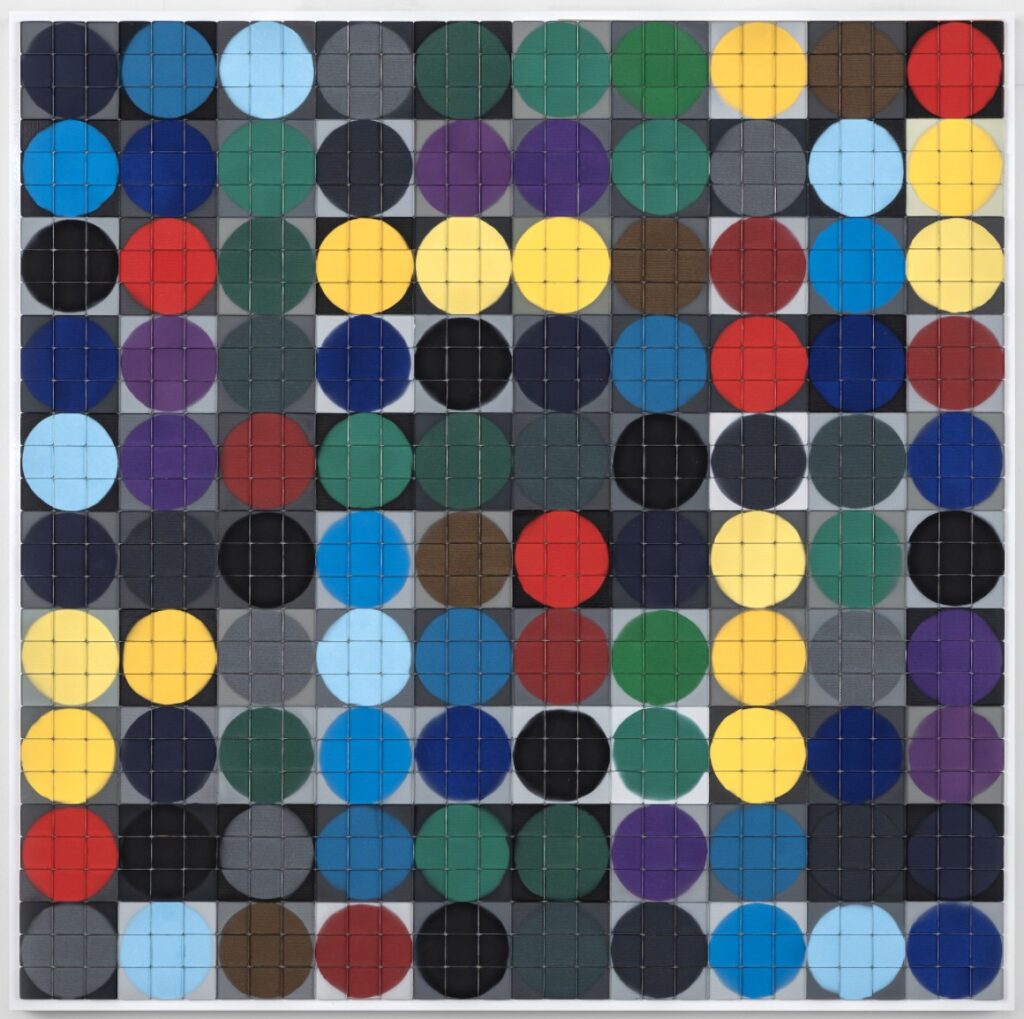
MORE ABOUT THE ARTISTS
Florence Arnold (1900-1994) was born in Prescott, Arizona. She began her career in music, earning a Bachelor’s of Art in music in 1926 from Mills College in Oakland, California, a teaching credential from the Claremont Colleges in 1937, and a Bachelor’s of Education in 1939 from the University of Southern California. She taught music at Fullerton Union High School for 42 years. Arnold started painting around age fifty after retiring from teaching. She studied with Karl Benjamin at Pomona College, and drew inspiration from fellow hard-edge painter John McLaughlin. In addition to being an accomplished studio artist, Arnold was also a prolific community organizer. She was a founding member of the Muckenthaler Cultural Center and an influential member of the Orange County Art Association, the Art Alliance at California State University Fullerton, and the Florence Young Artist Festival/Exhibition, which she founded in 1976. Her work has been exhibited at the Laguna Art Museum, the Muckenthaler Cultural Center, and the Smithsonian, as well as in international exhibitions in Madrid, Copenhagen, Florence, Rome, Milan, and Venice.
Karl Benjamin (1925-2012) was born in Chicago, Illinois. He began his undergraduate studies at Northwestern University in 1943, but his education was interrupted by service in the U.S. Navy during WWII. Benjamin moved to Southern California in 1946 to study under the G.I. Bill. He earned his BA in English Literature, History, and Philosophy in 1949 from the University of Redlands, and began his career as a public-school teacher with no intention of becoming an artist. He earned an MFA from Claremont Graduate University in 1960. Benjamin joined the faculty of Pomona College in 1979 as artist-in-residence and was appointed the Loren Babcock Miller Professor of Fine Arts in 1991. He was granted emeritus status upon his retirement in 1994.
Notable early exhibitions include a solo show at the Pasadena Art Museum and the ground-breaking 1959 exhibition Four Abstract Classicists, curated by Jules Langsner, which opened at the San Francisco Museum of Art and travelled to the Los Angeles County Museum. Benjamin was awarded National Endowment for the Arts Grants in 1983 and 1989. His work has been featured in numerous museum exhibitions and is included in the public collections of the Los Angeles County Museum of Art; Museum of Contemporary Art, Los Angeles; Hirshhorn Museum and Sculpture Garden, Washington, D.C.; Museum of Fine Arts, Houston; San Francisco Museum of Modern Art; and the Whitney Museum of American Art, NY, among many others.
June Harwood (1933-2015) was born in Middletown, New York. Harwood earned a Bachelor’s Degree in Fine Arts from Syracuse University before moving to Los Angeles. In 1958, she earned a Master of Arts degree from Los Angeles State College of Applied Arts and Sciences, now called California State University, Los Angeles, and a Life Diploma in Secondary Education in Art in 1964. She taught art at Hollywood High School, and she was a member of the Los Angeles Art Association, where she met painter Lorser Feitelson.
She met art critic Jules Langsner when he was organizing an exhibition on Hard-Edge painting, a term he originated. Langsner and Harwood married in Rome, Italy, in 1965 and honeymooned with Man Ray in Paris. They returned to California and lived together in the Hollywood area until Langsner’s sudden death two years later in 1967, at age 56.
Harwood was given a one-person exhibition at the Santa Barbara Museum of Art in 1967. She began teaching drawing and painting at Los Angeles Valley College in the early 1970s, where she later chaired the Art Department. She retired from the college in 1993.
Harwood exhibited with many galleries over the years, including the Hollis Gallery, San Francisco, Molly Barnes Gallery, Los Angeles, Rex Evans Gallery, Los Angeles, David Stuart Galleries, Los Angeles, Tobey C. Moss Gallery, Los Angeles, and Louis Stern Fine Arts, Los Angeles, among others. Harwood’s work was included in several exhibitions in the Art Gallery at Los Angeles Valley College, including a one-person show in 1991. Broader interest in her work was revived by the exhibition, Hard-Edge Painting Revised: 1959-1969, at NoHo Modern Gallery in North Holllywood, California, in 2003. The last institutional showing of her work before her death was The Los Angeles School exhibition, curated by Dave Hickey, at the Ben Maltz Gallery, Otis College of Art and Design in 2006.
Rachel Lachowicz was born in San Francisco, CA and is currently based in Santa Monica. She received her BFA from California Institute of the Arts in 1984. Her professional history covers over 30 years of conceptual art making and her work can be found in the permanent collections of the Whitney Museum of American Art, the Israel Museum in Jerusalem, the Los Angeles County Museum of Art, the Museum of Contemporary Art, Los Angeles, the Museum of Fine Arts, Boston, The Orange County Museum of Art, The Palm Springs Museum of Art, the Museum Moderner Kunst, Palais Lichtenstein in Vienna, and The Bronx Museum of the Arts. She is a recipient of the John Simon Guggenheim Memorial Fellowship and the Louis Comfort Tiffany Foundation award.
Rachel is known for turning her witty eye on the masculine-centric world of Modernism and for making radical incursions into the canon of art history by reconfiguring famous works. She falls under a multitude of headings: feminist, appropriationist, post-minimalist, conceptual artist, and conceptual sculptor. Labels aside, her work contributed to a ground-breaking reconceptualization of the feminist position.
The term “Lipstick Feminist,” grew out of an’80s-’90s philosophy but more specifically the art world came to use that term to refer to the work of Rachel Lachowicz, and less than a handful of others. She explores the relationship of identity and the politics of mark making, predominately through use of cosmetics. Lachowicz makes both discreet objects and large-scale installations that are visually lush (at times sexually provocative) and always with a deliberate repurposing of meaning.
Rachel is the chair of the Art Department at Claremont Graduate University, with over 20 years of teaching experience at the graduate level, and an extensive lecture résumé. For 12 years she was a Santa Monica Arts Commissioner, and served on the board of the Santa Monica Arts Foundation and was a member of the Santa Monica Public Art Committee.
Terry O’Shea (1941-2002) was an American Postwar Contemporary artist who was awarded the prestigious New Talent Award from the Los Angeles County Museum of Art in 1966. While firmly rooted in the formal and material concerns of the Light and Space movement, his intimately-scaled works in resin offer a trickster twist on the purity of late modernist abstraction. Small capsules resemble pharmaceutical pills begging to be swallowed, while his Crystall Ball sculpture suggests the artist as seer with tongue in cheek. His work has been exhibited at the Los Angeles County Museum of Art, and posthumously at the Long Beach Museum of Art Annex, Venice Institute of Contemporary Art, Mike Kelley Gallery, Craig Krull Gallery, Santa Monica Auctions and others. Terry O’Shea is featured in Review: ‘Serious Candy’ captures Terry O’Shea’s elusive nature, a piece from the Los Angeles Times in 2013.

